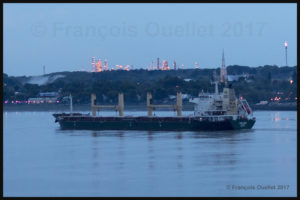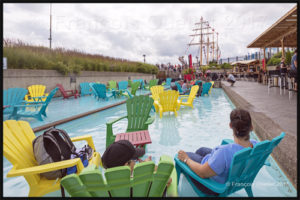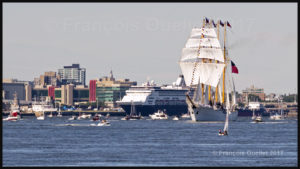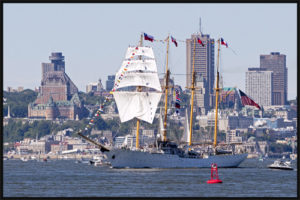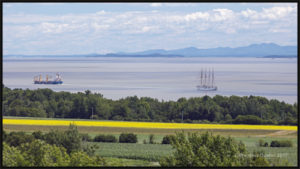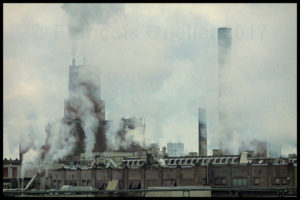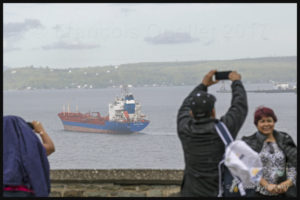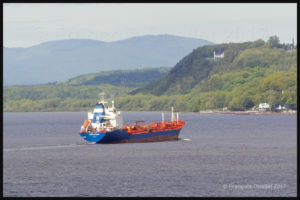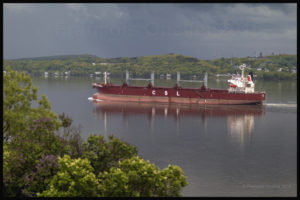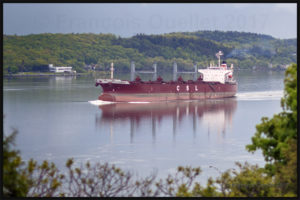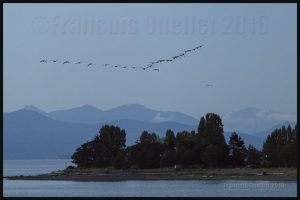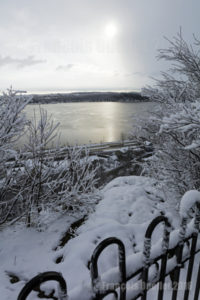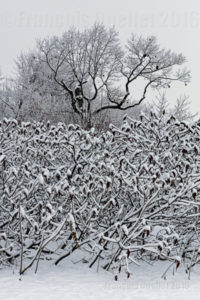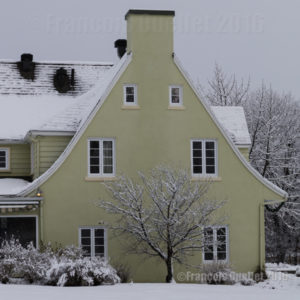The picture above shows the Harlequin, a bulk carrier built in 2012 that has a 9.7 meter draught. It sails under the Cyprus convenience flag. On June 18th 2017, when the photo was taken, it was in front of the Jean Gaulin refinery in Lévis, Quebec, and was about to cross the Atlantic heading to Rouen, France. The Jean Gaulin refinery is Quebec’s largest refinery and ranks second in Canada when it comes to refining crude oil.
The photo was taken at 21:07, just before nightime. Since I was positioned on the highest floor of the Quai des Cageux wooden tower, there were constant vibrations associated with people going up and down the stairs. The tower’s movement combined with a moving vessel made the use of of tripod totally useless. It was thus necessary to make a handheld photo, which seriously increased the risk of a blurred picture considering the lack of light.
A Canon EF 85mm f/1.2 II USM fixed lens installed on a Canon 5DSR full frame camera helped to make a successful shot. The fact that this kind of lens requires very little light increases the photographer’s margin of manoeuver. It would obviously have been possible to increase the ISO to 6000 and more to compensate for the poor lighting, but that would have degraded the photo’s quality. The ISO was thus limited to 2000, with a shutter speed of 1/200 sec and a 1.6 aperture.
In order to limit the risk of a blurred picture, it was necessary to follow the movement of the ship with the camera. The closer one gets to immobilizing the ship in the viewfinder, the better the chances of a defined photo.
Since the ship was farther than it appears on the picture above, some cropping was mandatory to bring the vessel to a decent size. If the ISO had been too elevated to start with, the ensuing photographic grain would have been too big after the cropping and the quality of the picture would have suffered. With an ISO limited to 2000, the image kept a decent definition.
For other pictures of ships on my website, click on the following link : Ship photography.
